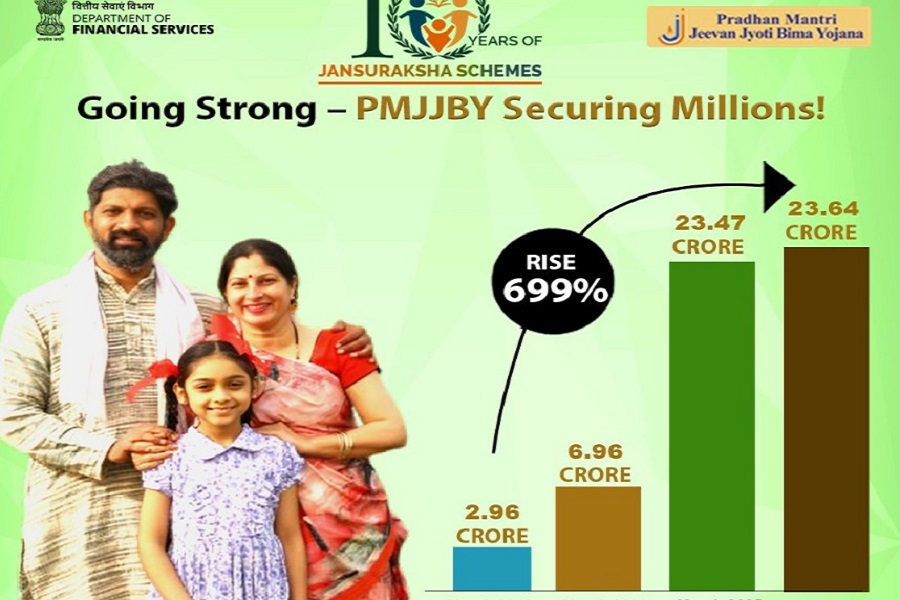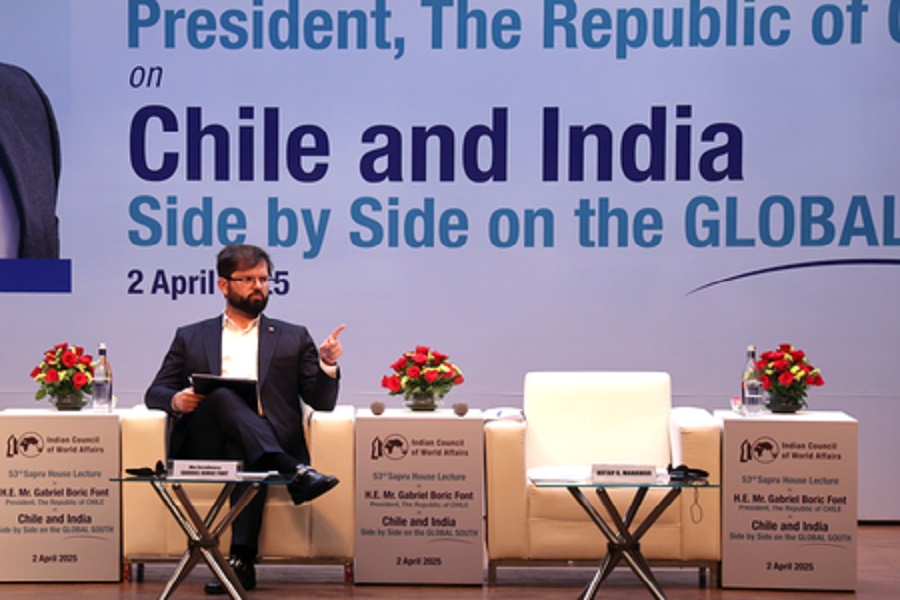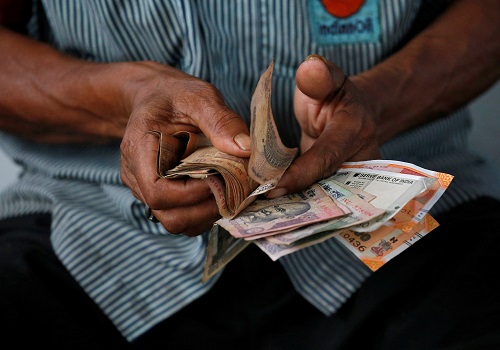Life Insurance Corporation of India coming up with IPO to raise around Rs 21,000 crore

Life Insurance Corporation of India
-
Life Insurance Corporation of India (LIC) is coming out with a 100% book building; initial public offering (IPO) of 22,13,74,920 shares of Rs 10 each in a price band Rs 902-949 per equity share.
-
Not more than 50% of the issue will be allocated to Qualified Institutional Buyers (QIBs), including 5% to the mutual funds. Further, not less than 15% of the issue will be available for the non-institutional bidders and the remaining 35% for the retail investors.
-
The issue will open for subscription on May 04, 2022 and will close on May 09, 2022.
-
The shares will be listed on BSE as well as NSE.
-
The face value of the share is Rs 10 and is priced 90.20 times of its face value on the lower side and 94.90 times on the higher side.
-
Book running lead managers to the issue are Kotak Mahindra Capital Company, Axis Capital, BofA Securities India, Citigroup Global Markets India, JM Financial, Goldman Sachs (India) Securities, ICICI Securities, J.P.Morgan India, Nomura Financial Advisory and Securities (India) and SBI Capital Markets.
-
Compliance Officer for the issue is Pawan Agrawal.
Profile of the company
The corporation was formed by merging and nationalizing 245 private life insurance companies in India on September 1, 1956, with an initial capital of Rs 50 million. From the corporation’s incorporation until 2000, it was the only life insurer in India. The corporation was identified by IRDAI as a Domestic Systemically Important Insurer (D-SII) on the basis of size, market importance and domestic and global inter-connectedness in September 2020. The corporation’s brand, LIC, was recognised as the third strongest and 10th most valuable global insurance brand as per the “Insurance 100 2021 report” released by Brand Finance. The strength of a brand means the efficacy of a brand's performance on intangible measures relative to its competitors and is determined by looking at the brand's marketing investment, stakeholder equity and impact of those on business performance. The value of a brand is the present value of earnings specifically related to brand reputation.
The corporation is been providing life insurance in India for more than 65 years and is the largest life insurer in India, with a 61.6% market share in terms of premiums (or GWP), a 61.4% market share in terms of New Business Premium (or NBP), a 71.8% market share in terms of number of individual policies issued, a 88.8% market share in terms of number of group policies issued for the nine months ended December 31, 2021, as well as by the number of individual agents, which comprised 55% of all individual agents in India as at December 31, 2021. The corporation’s market share in the Indian life insurance industry for Fiscal 2021 was 64.1% in terms of GWP, 66.2% in terms of NBP, 74.6% in terms of number of individual policies issued, and 81.1% in terms of number of group policies issued. The corporation had the highest gap in market share by life insurance GWP relative to the second-largest life insurer in India as compared to the market leaders in the top seven markets globally (in 2020 for the other players and in Fiscal 2021 for the corporation).
The corporation is the largest asset manager in India as at December 31, 2021, with AUM (comprising policyholders’ investment, shareholders’ investment and assets held to cover linked liabilities) of Rs 40.1 trillion on a standalone basis, which was (i) more than 3.2 times the total AUM of all private life insurers in India, (ii) approximately 15.6 times more than the AUM of the second-largest player in the Indian life insurance industry in terms of AUM, (iii) more than 1.1 times the entire Indian mutual fund industry’s AUM and (iv) 17.0% of India’s estimated GDP for Fiscal 2022. As per the CRISIL Report, as at December 31, 2021, the corporation’s investments in listed equity represented around 4% of the total market capitalisation of NSE as at that date.
Proceed is being used for:
-
Achieving the benefits of listing the equity shares on the stock exchange.
-
Carrying out an offer for sale of 221,374,920 shares by selling shareholders.
Industry overview
Based on life insurance premium, India is the tenth largest life insurance market in the world and the fifth largest in Asia, as per Swiss Re’s sigma No 3/2021 report for July 2021. The size of the Indian life insurance industry was Rs 6.2 trillion based on total premium in Fiscal 2021, up from Rs 5.7 trillion in Fiscal 2020. The industry’s total premium has grown at 11% CAGR in the last five years ending in Fiscal 2021. New business premiums (NBP) grew at 15% CAGR during Fiscals 2016 to 2021, to approximately Rs. 2.78 trillion. In fact, in Fiscal 2021 - a year impacted by the COVID- 19 pandemic, the NBP of the industry rose by 7.5%. Within the NBP, group business premium grew at approximately 15.4% CAGR from Fiscals 2016 to 2021, whereas individual premium rose approximately 14% CAGR during the same period.
Life insurance products can be classified on the basis of products and customer segments. Historically, life insurance products were savings oriented. Non-linked products are traditional products with a protection and savings element built in or pure-protection products. Non-linked savings products can be further segregated into participating products and non-participating products. Participating products have variable returns, as these partake in the profits of the participating business of the company. Linked products’ returns, on the other hand, are tied to the performance of debt and equity markets and are also savings cum-protection products. For Fiscal 2021, non-linked products accounted for 86% of the total premiums. The share of non-linked products was lower for private players, constituting 57% of the total premium for Fiscal 2021.
Life insurance premium has grown at an 11% CAGR from Fiscals 2016 to 2021. The double-digit growth in premium can be attributed to expansion in the distribution network, introduction of different government schemes and financial inclusion drives. These factors have increased awareness about the need for insurance and propelled industry growth. LIC holds a 64% share by total life insurance premium and grew at 9% CAGR from Fiscals 2016 to 2021. Private insurers grew at an 18% CAGR growth during the same period. New business premium has grown at 15% CAGR in the past five years with LIC and private insurers growing at 14% and 18% CAGR, respectively. In Fiscal 2021, amid the COVID-19 pandemic, NBP grew approximately 7% reflecting the impact of the economic slowdown. During the first nine months of Fiscal 2022, NBP growth remained low for the industry with y-o-y growth of 7.4%. The future looks promising for the life insurance industry with several changes in regulatory framework which will lead to further change in the way the industry conducts its business and engages with its customers.
Pros and strengths
Fifth largest life insurer globally: The corporation is ranked fifth globally in terms of life insurance GWP (comparing the corporation’s life insurance premium for Fiscal 2021 to its global peers’ life insurance premium for 2020), and 10th globally in terms of total assets (comparing the corporation’s assets as at March 31, 2021 with assets of other life insurers as at December 31, 2020). The corporation is the largest life insurer in India in terms of GWP, NBP, number of individual policies issued and number of group policies issued for Fiscal 2021 and the nine months ended December 31, 2021. For Fiscal 2021, the corporation issued around 21 million individual policies in India, representing around 75% market share in new individual policy issuances. The second largest player in the industry issued 1.66 million individual policies and had a 5.9% market share for Fiscal 2021.
Trusted brand and customer-centric business model: The corporation was incorporated in 1956 and up to 2000 it was the only life insurance provider in India, which made LIC, as a brand, synonymous with life insurance in India. The brand ‘LIC’ was recognized as the third strongest and 10th most valuable global insurance brand in 2021, as per the “Insurance 100 2021” report released by Brand Finance. As per the report, the brand value of LIC in 2021 was $8,655 million, with a Brand Strength Index (BSI) score of 84.1 out of 100, corresponding to AAA- brand strength rating. Moreover, the corporation’s customer-centric focus has won it numerous awards over the years, including FICCI Special Jury Award at the Insurance Industry Awards 2022; Marksmen Daily for Epitomising Excellence in the BFSI Industry Award 2021-22; National Award for Leadership & Excellence: Claims Service Leader Award 2021-22 and many more.
Pan India presence through omni-channel distribution network: The corporation has a wide presence across India and distribute its policies in all 36 states and union territories. As at March 31, 2021, it had offices in 91% of districts in India as compared to 81% for the entire private sector combined. As at March 31, 2021, it had 2,390 offices located in Tier III and Tier IV centres, while private players only had 583 in aggregate in those centres, and it had 177 offices located in Tier V & VI centres, while private players had 55 in aggregate in those centres. As at December 31, 2021, the corporation is having 1.33 million individual agents; 70 bancassurance partners; 2,128 active Micro Insurance agents; and 4,769 Point of Sales Persons-Life Insurance scheme.
Cross-cyclical product mix: The corporations policies address consumers’ needs through the four principal stages of life, namely, beginning of savings, career and marriage, family needs and retirement planning and retirement and asset drawdown. The corporation has a broad, diversified product portfolio covering various segments across individual products and group products. The corporation’s individual product portfolio in India comprises 32 individual products (16 participating products and 16 non-participating products) and seven individual optional rider benefits. The corporation’s group product portfolio in India comprises 11 group products. The corporation is well placed to serve customers across age brackets with a comprehensive product portfolio, while maintaining a strong connect across age groups. Customers in the age bracket 27 to 40 years old accounted for approximately 42% and 42% of individual policies sold in Fiscal 2021 and the nine months ended December 31, 2021, respectively.
Risks and concerns
Major revenue comes from participating products and single premium products: For Fiscal 2019, Fiscal 2020, Fiscal 2021 and the nine months ended December 31, 2021, NBP of the corporation’s individual participating products was Rs 342,140.92 million, Rs 357,946.96 million, Rs 351,227.57 million and Rs 249,695.17 million, respectively, which contributed 67.05%, 69.64%, 62.13% and 69.70% to its total individual NBP in India, respectively. In addition, for Fiscal 2019, Fiscal 2020, Fiscal 2021 and the nine months ended December 31, 2021, the NBP derived from its single premium products in India was Rs 1,109,204.24 million, Rs 1,202,310.08 million, Rs 1,503,971.24 million and Rs 1,040,028.61 million, which contributed 78%, 67.49%, 81.61% and 82.53% to its total NBP in India, respectively. Any significant regulatory changes or market developments that adversely affect sales of such products could have a material adverse effect on its business, financial condition, results of operations and cash flows and may also require it to make changes to its existing product designs.
Significant portion of individual premium comes from certain states: A significant portion of the corporation’s individual NBP in India is concentrated in the states of Maharashtra, West Bengal, Uttar Pradesh, Gujarat and Tamil Nadu in India. For Fiscal 2019, Fiscal 2020, Fiscal 2021 and the nine months ended December 31, 2021, its top five states in India in terms of individual NBP contributed Rs 253,962.10 million, Rs 251,818.66 million, Rs 278,161.77 million and Rs 169,358.84 million, respectively, which was 49.77%, 48.99%, 49.21% and 47.27% of its total individual NBP in India, respectively. Due to the geographic concentration of its individual premiums in India, any significant reduction in premium due to any materially adverse social, political or economic developments, natural calamities, civil disruptions, or changes in the policies of the states or local governments in these areas could have a material adverse effect on its business, financial condition, results of operations and cash flows.
Increased competition: As at March 31, 2021, the corporation’s competitors in India were the 23 private insurance companies in India. On April 1, 2021, the Insurance Laws (Amendment) Act, 2021 came into force, raising the limit of foreign investment in an Indian insurance company from 49% to 74%, subject to certain safeguards. This is expected to lead to new entrants in the industry, better capitalisation of existing competitors and generally increase the level of competition. While increased competition may lead to overall growth in customer participation for the underpenetrated insurance industry in India, prompt additional reforms for the sector and improved industry practices, it may also adversely impact the corporation’s market share, margins, growth in new business premiums and customer acquisition.
Insurance volume increases significantly in last quarter: The corporation is subject to seasonal fluctuations in results of operations and cash flow. Insurance volumes for individual products typically increase significantly in the last quarter of each Fiscal Year, which coincides with the end of the tax year in India, due to customers capitalising on income tax advantages that life insurance products offer. Accordingly, its results of operations and cash flows for any given period are not necessarily indicative of annual results or continuing trends and may vary. In addition, financial information for the nine months ended December 31, 2021 are not indicative of full-year results and are not comparable with the financial information presented for Fiscal 2019, Fiscal 2020 and Fiscal 2021.
Outlook
LIC has been providing life insurance in India for more than 65 years and is the largest life insurer in India, with a 61.6% market share in terms of premiums (or GWP), a 61.4% market share in terms of New Business Premium (or NBP), a 71.8% market share in terms of number of individual policies issued, a 88.8% market share in terms of number of group policies issued for the nine months ended December 31, 2021, as well as by the number of individual agents, which comprised 55% of all individual agents in India as at December 31, 2021. On the concern side, a significant proportion of the corporation’s total new business premiums are generated by participating products and single premium products, and any significant regulatory changes or market developments that adversely affect sales of such products could have a material adverse effect on its business. Moreover, the corporation may face significant competition and its business, financial condition, results of operations and cash flows could be materially harmed if it is unable to compete effectively.
The issue has been offered in a price band of Rs 902-949 per equity share. The aggregate size of the offer is Rs 19,968 crore to Rs 21,008 crore based on lower and upper price band respectively. Minimum application is to be made for 15 shares and in multiples thereon, thereafter. Meanwhile, the corporation’s total premium increased by Rs 230,393.52 million, or 6.02%, from Rs 3,828,114.50 million in Fiscal 2020 to Rs 4,058,508.02 million in Fiscal 2021. This increase was primarily due to an increase in its premiums from India, which increased by Rs 238,745.73 million, or 6.30%, from Rs 3,790,135.63 million for Fiscal 2020 to Rs 4,028,881.36 million for Fiscal 2021. Moreover, profit before tax increased by 9.63% from Rs 27,185.16 million in Fiscal 2020 to Rs 29,803.47 million in Fiscal 2021.
Meanwhile, the corporation is planning to increase its market share of the bancassurance channel by tying up with more bank partners and improving their productivity by providing them with digital solutions for on-boarding customers for its products. Also, the corporation intends to continue strengthening its omni-channel distribution network for individual products and increase its productivity. It plans to strategically expand its individual agency network, improve its agents’ productivity and maintain its focus on improving the quality of agents it recruits and their longevity. Moreover, the corporation’s plan to further diversify its product mix by increasing the contribution of the non-participating portfolio will help it in the coming time.




















